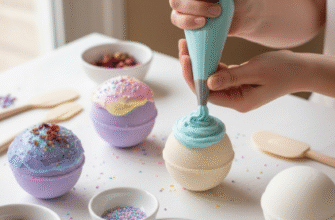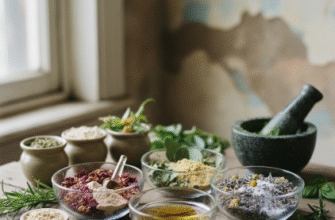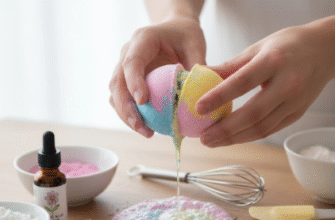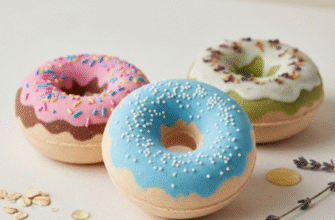Tired of dealing with dry, ragged, or peeling cuticles? You’re definitely not alone. Our hands go through a lot every day, and factors like frequent handwashing, harsh soaps, cold weather, and even just everyday tasks can leave the delicate skin around our nails feeling parched and looking less than stellar. While manicures help, consistent, daily care is the real secret to healthy, happy cuticles. Enter the genius invention: the cuticle oil pen. It’s portable, mess-free, and makes application incredibly simple. But those little pens can add up in cost, and sometimes they contain ingredients you might not love.
What if you could have the convenience without the high price tag, using ingredients you choose yourself? Good news – you absolutely can! Making your own DIY cuticle oil pen is surprisingly easy, incredibly cost-effective, and puts you in complete control of what goes onto your skin. Forget questionable preservatives or artificial fragrances; you can tailor your oil blend to your specific needs and preferences. Plus, there’s a certain satisfaction in creating your own little beauty treatments!
Why Bother Making Your Own Cuticle Oil?
Okay, so you can buy cuticle oil pens pretty much anywhere. Why go through the trouble of making one? Let’s break down the benefits:
Cost Savings: This is a big one. Pre-filled pens often contain only a small amount of oil (usually 2-5ml) for a relatively high price. You can buy carrier oils and empty pens in bulk for a fraction of the cost per pen. A single bottle of carrier oil can fill dozens of pens, saving you significant money in the long run.
Ingredient Control: Do you have sensitive skin? Allergies? Or simply prefer natural, organic ingredients? Making your own means you know exactly what’s in your cuticle oil. No hidden chemicals, synthetic fragrances, or potential irritants unless you choose to add them (though we recommend sticking to skin-loving ingredients!). You can select high-quality, pure oils known for their beneficial properties.
Customization: This is where the fun begins! You can create a blend perfectly suited to your needs. Need intense hydration? Choose richer oils. Want something to promote nail strength? Add specific essential oils (with caution, of course). Prefer a light, fast-absorbing oil? Opt for grapeseed or fractionated coconut oil. You can even create different blends for different seasons or needs.
Eco-Friendly Aspect: By reusing the pen applicators (many can be carefully refilled) and buying oils in larger bottles, you can reduce plastic waste compared to constantly buying single-use disposable pens.
It’s Easy and Fun: Seriously, this DIY project is incredibly simple. It requires minimal equipment and time, and it’s quite rewarding to whip up your own effective beauty product.
Gathering Your Supplies: The DIY Cuticle Oil Toolkit
Before you start mixing, you’ll need a few things. The good news is most are readily available online or at health food stores.
- Empty Cuticle Oil Pens: These are the star of the show. Look for twist-up brush pens designed for oils. They usually come in packs and are quite affordable. Ensure they are clean and new, or thoroughly cleaned if you are attempting to refill an old one (which can sometimes be tricky).
- Carrier Oil(s): This will form the base of your cuticle oil. Choose one or a blend based on your preferences and skin needs. More on choosing these below!
- Essential Oils (Optional): If you want to add fragrance or extra therapeutic benefits, have a few skin-safe essential oils on hand. Remember, these are potent and must be diluted properly.
- Small Funnel: A tiny funnel (often sold for filling perfume atomizers or in cosmetic DIY kits) is crucial for getting the oil neatly into the narrow pen opening without making a mess.
- Small Bowl or Beaker: Needed for mixing your oils before filling the pens. Glass is ideal as it doesn’t react with oils.
- Stirring Rod or Small Whisk: To ensure your oils are well combined. A clean toothpick can work in a pinch for tiny batches.
- Pipette or Dropper (Optional): Can be helpful for adding essential oils accurately or transferring the blend to the funnel if preferred.
Choosing Your Star Ingredients: Carrier and Essential Oils
The effectiveness of your DIY cuticle oil lies in the ingredients you choose. Let’s explore some popular and beneficial options.
Carrier Oils: The Hydrating Base
These oils make up the bulk of your recipe and provide the primary moisturizing and nourishing benefits. Here are some excellent choices:
- Jojoba Oil: Often hailed as the king of cuticle oils, and for good reason. Jojoba oil’s molecular structure is remarkably similar to our skin’s natural sebum. This means it absorbs beautifully, deeply moisturizes without feeling greasy, and helps balance oil production. It’s rich in vitamins E and B-complex, nourishing the skin and nails.
- Sweet Almond Oil: A fantastic all-rounder. It’s rich in Vitamin E, fatty acids, proteins, and minerals. It’s deeply moisturizing yet relatively lightweight, softening cuticles and promoting healthy nail growth. It has a very mild, slightly sweet scent.
- Apricot Kernel Oil: Similar to sweet almond oil but often considered even lighter in texture. It’s high in Vitamin A and E, absorbs quickly, and is excellent for softening and hydrating dry, irritated skin. Great for sensitive cuticles.
- Avocado Oil: A richer, thicker oil packed with vitamins A, D, E, and fatty acids. It provides intense hydration, making it superb for very dry, cracked cuticles or for use as an overnight treatment. It might feel a bit heavier than other options.
- Grapeseed Oil: A very light, non-greasy oil that absorbs almost instantly. It contains antioxidants and linoleic acid. While perhaps less intensely moisturizing than others, it’s great for daytime use when you don’t want any oily residue.
- Olive Oil (Extra Virgin): A pantry staple that works surprisingly well! It’s rich in Vitamin E and squalene, offering good moisturization. Choose extra virgin for the highest quality. It does have a distinct scent and can feel a little heavier.
- Fractionated Coconut Oil: This is coconut oil that remains liquid at room temperature and has had the long-chain fatty acids removed. It’s lightweight, non-greasy, absorbs well, and has a long shelf life. It lacks the strong scent of regular coconut oil.
You can use a single carrier oil or create a blend. A common approach is using Jojoba or Sweet Almond oil as the main base (around 70-80%) and adding a smaller amount of another oil like Vitamin E oil (often sold as a supplement – just pierce the capsule) or Avocado oil for extra nourishment.
Essential Oils: Optional Boosters (Use With Care!)
Essential oils can add a pleasant scent and potential therapeutic benefits, but they are highly concentrated and must be heavily diluted in your carrier oil blend. A little goes a long way – typically, essential oils should constitute no more than 1-2% of your total blend for leave-on products like cuticle oil.
Important Safety Note: Essential oils are potent substances. Always perform a patch test on a small area of skin (like your inner elbow) 24 hours before applying your blend more widely, especially if using new essential oils or if you have sensitive skin. Discontinue use immediately if any irritation occurs. Some essential oils, particularly citrus oils like lemon, can increase sun sensitivity, so avoid direct, prolonged sun exposure on areas where they’ve been applied.
Some popular choices for cuticle care include:
- Lavender: Known for its calming scent and soothing properties. It can help calm irritated skin around the nails.
- Lemon: Can help brighten dull nails and skin (use sparingly due to photosensitivity). It also has a fresh, cleansing aroma.
- Tea Tree: Possesses natural antiseptic and anti-fungal properties, potentially helpful for maintaining healthy nails. Has a strong medicinal scent.
- Frankincense: Often used for its potential strengthening and anti-inflammatory properties. Has a woody, earthy scent.
- Myrrh: Traditionally used to strengthen brittle nails and moisturize dry cuticles. Has a warm, slightly bitter aroma.
- Rosemary: May stimulate circulation and promote healthy nail growth. Has a strong herbaceous scent.
- Geranium: Balancing for the skin and has a pleasant floral scent.
Remember: Dilution is key! For a typical 3-5ml cuticle oil pen, 1-2 drops of essential oil in total is usually sufficient.
The Simple DIY Cuticle Oil Pen Recipe & Steps
Let’s get to the fun part – making your oil! This is a basic template you can adapt.
Basic Recipe (Fills approximately one 3-5ml pen):
- ~1 teaspoon (approx. 5ml) total Carrier Oil(s) (e.g., Jojoba, Sweet Almond, or a blend)
- 1-2 drops total Essential Oil(s) (Optional)
Step-by-Step Instructions:
- Prepare Your Workspace: Lay down some paper towels to protect your surface. Ensure your small bowl, funnel, and pen(s) are clean and completely dry.
- Measure Carrier Oil(s): Pour your chosen carrier oil(s) into the small bowl. If blending oils, add them now. For example, you might use 3/4 tsp Jojoba oil and 1/4 tsp Vitamin E oil.
- Add Essential Oil(s) (Optional): If using, carefully add 1-2 drops of your chosen essential oil(s) to the carrier oil blend. Stir gently but thoroughly with your clean stirring rod or toothpick.
- Prepare the Pen: Ensure the brush tip is retracted or properly seated according to the pen’s design (some require you to twist the base extensively the first time to saturate the brush). Remove the cap that covers the filling hole at the base (opposite the brush end).
- Fill the Pen: Place the small funnel into the opening at the base of the pen. Slowly and carefully pour your oil mixture through the funnel into the pen reservoir. Fill it almost to the top, leaving a small air gap to prevent leakage when you insert the end cap/plug.
- Seal the Pen: Remove the funnel. Securely replace the end cap or plug onto the pen base. Ensure it clicks or fits snugly.
- Prime the Pen: Replace the main brush cap. Twist the base mechanism of the pen multiple times (it might take 20-30 clicks or more initially) until you see the oil begin to saturate the brush tip.
- Label (Optional but Recommended): Stick a small label on your pen indicating the ingredients or the date made, especially if you make different blends.
- Clean Up: Wash your bowl, funnel, and stirrer promptly with warm soapy water.
Congratulations! You’ve just made your very own custom cuticle oil pen!
How to Use Your Shiny New DIY Cuticle Oil Pen
Using your pen couldn’t be easier:
- Twist: Gently twist the base of the pen mechanism a few clicks until a small amount of oil appears on the brush tip. You don’t need much!
- Brush: Sweep the brush tip across your cuticles and the skin surrounding each nail. Don’t forget the sides and even slightly underneath the nail tip if accessible.
- Massage: Gently massage the oil into your cuticles and nails for a few seconds. This helps the oil absorb better and stimulates blood flow to the nail bed, which is great for healthy growth.
- Repeat: Apply as needed! For best results, aim for at least once or twice daily. Applying after washing your hands or before bed is particularly effective. Consistency is key to seeing improvement.
Tips for Cuticle Oil Success
- Start Small: When trying a new blend, perhaps only fill one pen initially to see how you like it before committing a larger batch of oil.
- Store Properly: Keep your filled pens (and your bulk oils) in a cool, dark place away from direct sunlight. This helps preserve the quality of the oils and prevents them from degrading quickly.
- Patch Test Always: We mentioned it before, but it bears repeating: always patch test new blends, especially those with essential oils.
- Consistency is Crucial: Applying cuticle oil sporadically won’t yield significant results. Make it part of your daily routine, like brushing your teeth or applying hand cream. Keep a pen on your nightstand, desk, or in your bag for easy access.
- Be Patient: It takes time for nails and skin to respond. Consistent use over several weeks will lead to noticeably softer, healthier-looking cuticles and potentially stronger nails.
- Don’t Forget Your Toenails: Cuticles on your toes need love too! Your pen makes application easy there as well.
Enjoy Your Healthy, Hydrated Cuticles!
There you have it – everything you need to know to ditch expensive store-bought options and embrace the simple satisfaction of DIY cuticle oil pens. It’s a small act of self-care that can make a big difference in the health and appearance of your nails and hands. By choosing your own high-quality ingredients and enjoying the mess-free application of the pen format, you’re well on your way to achieving those beautifully maintained cuticles you’ve been aiming for. So gather your oils, grab some pens, and get mixing – your nails will thank you!
Verified Benefit: Jojoba oil is an excellent choice as a primary carrier oil for cuticle care. Its composition is very close to the natural oils produced by human skin (sebum). This similarity allows it to absorb readily and deeply, providing effective moisturization without leaving a heavy, greasy feeling. It helps to soften cuticles and nourish the nail plate effectively.
Taking just a minute or two each day to apply your custom-blend oil can transform dry, unhappy cuticles into soft, healthy frames for your nails. Happy DIY-ing!








